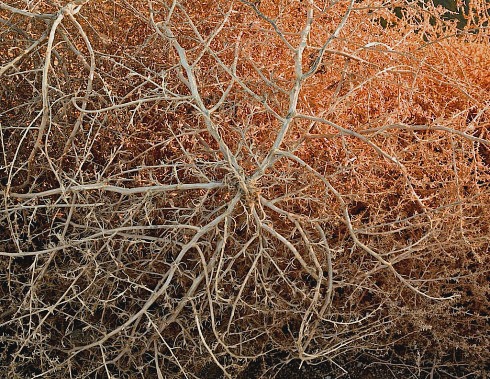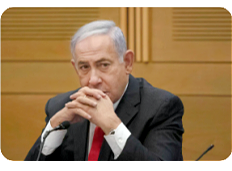Archives
AND MORE...

The Enemy Of My Friend
_____________________

They Win, We Lose
____________________

Today's Freedom Fighters Tomorrow's Terrorists?
_____________________

Chock Full o'Nuts
_____________________

Umpteenth Wake-Up Call
_____________________

Our Gift To World Peace
_____________________
February 2, 2014
Who's Who When & Where
"Who's really who in the Middle East?" asks Michael Ledeen below, as he tries to make sense of the bizarre and ever-changing alliances within the Arab Middle East.
Problem is the US has a habit of intervening in global conflicts, whether or not it knows (and it usually doesn't) who's who, which is why we will eventually see arms provided by us to the Syrian "rebels" pointed at us or our allies.
PJ Media | February 2, 2014
The Desert of Mirrors: Who's Really Who in the Middle East?
by Michael Ledeen

Desert tumbleweed.
It’s the Middle Eastern version of the old Abbott and Costello routine “Who’s On First?” Just when we thought we had at least most of the killers in Syria, Lebanon, Turkey and Iraq sorted out, things suddenly became baffling. Incomprehensible, even. Some days you can’t tell the players even WITH a scorecard.
In Syria, some three years ago, a bunch of non-fanatics defected from Assad’s regular Army, and started fighting against his regime. There were more defections, and the opposition grew stronger, despite the regime’s violent counter-attacks. It began to look like Assad might fall. Then his two big allies, Russia and Iran, shipped in weapons and fighters and the tide turned. It began to look like the opposition might be wiped out. Then various Islamist fanatics–including two or three that could reliably be called “Al Qaeda”–rallied to the opposition cause, and did well enough for the conventional wisdom to embrace the thought that nobody was strong enough to win. Then the various opposition groups started killing one another, tilting the battlefield back in Assad’s (and Iran’s, and Russia’s) favor.
I’m not going to make you memorize the names of all the groups. I just want you to focus for a moment on the Abbott and Costello theme: who’s side is Al Qaeda on? At first it seemed pretty clear: Al Qaeda was fighting alongside the opposition, against Assad, which is to say, against Iran and Russia. The AQ leaders often said so, in just those words. But now comes word that the Al Qaeda forces are getting at least some support from Iran. That word comes from the US Treasury and State Departments and other good sources, by way of Tom Joscelyn, my friend and colleague at the Foundation for the Defense of Democracies, and he’s as good as it gets.
The key AQ leader in this baffling story is Yasin al Suri, who was branded as a senior AQ operative in Iran (where he’d been active since 2005, which suggests he gets on well with the mullahs) by the Treasury in 2011. Treasury offered a $10 million reward for help capturing al Suri, and the Iranians arrested him. But that was then. Now he’s out of jail, and hard at work:
“As head al Qaeda facilitator in Iran, al Suri is responsible for overseeing al Qaeda efforts to transfer experienced operatives and leaders from Pakistan to Syria, organizing and maintaining routes by which new recruits can travel to Syria via Turkey and assisting in the movement of al Qaeda external operatives to the West,” an unnamed State Department official told Al Jazeera.
An official at Treasury confirmed the claim. The US Government officials are not the only ones talking about collusion between Iran/Assad and the opposition. Michel Kilo, an opposition leader whose anti-Assad credentials are very credible, goes so far as to claim that the Islamist groups were actually organized and directed from Damascus.
“There are photos that have been found of several emirs of ISIS with [Syrian President] Bashar al-Assad,” said Kilo, who spoke with Al-Monitor on the sidelines of the Geneva II talks.
“The pictures were taken before they became emirs in ISIS (a leading Islamist anti-Assad group), when they were all officers in the Syrian special service. There are documents sent by the special service to ISIS telling them to capture or kidnap people in Raqqa and Jarabalus, and these documents will be published. And you will see how the regime fabricated these extremist groups that did not exist in our country at the beginning of the revolution.”
So one group of Islamist killers has its leader in Tehran, and another has long-standing connections between its leaders and Damascus. Yet there is no doubt that both groups are fighting. They’ve been effective. They’ve certainly killed Syrians, and almost certainly they’ve killed Iranians too. Nowadays they are also killing other opposition fighters in other groups. Just today, for example, the leader of one of the Islamist groups was killed by a car bomb set by another Islamist group.
Is there any way to make sense of this, or should we just say that it’s a classic Hobbesian conflict, “the war of every man against every man”? It could very well be just that. But maybe not.
I don’t know the answer (although I think that the keys to unlocking the mystery are probably in the Iranian and/or Russian archives), but it reminds me of one of the greatest of all grand deceptions, the Soviet-created “Trust” just after the Revolution. That was organized by the Soviet intelligence service, which created a phony opposition movement whose “leaders” contacted Western governments with offers to topple the Bolshevik regime. The “Trust” leaders provided the Western strategists with secret documents, and even assassinated Soviet officials in order to establish the bona fides of the Trust. The West bought the deception, and funded the Trust, giving the Soviets money, knowledge of Western plans, and the ability to manipulate Western anti-Soviet operations. The Trust’s most celebrated victim was the British official “Reilly Ace of Spies,” who was lured to a meeting, arrested, tortured, and executed.
Stratagems of this sort are not all that unusual, and it would not surprise me to learn that Iran sponsored Al Qaeda groups in Syria and Iraq, posing (and indeed often acting) as anti-Assad or anti-Maliki forces, in order to penetrate the opposition, manipulate its actions, and foment fighting among the various groups, all to the ultimate advantage of Khamenei/Maliki/Assad.
As Tom Joscelyn, scratching his talented mind, remarks,
The Iranian regime…has mastered duplicity and may have unknown reasons for keeping tabs on al Qaeda’s operations. Al Qaeda has also been willing to work with Iran on multiple occasions since the early 1990s, despite the two sides’ fundamentally different theologies and sometime vehement disagreements.
Iranian policy rarely moves in straight lines; it’s more like gyres and spirals. They’re very flexible, to put it mildly. Remember that before 9/11 the Iranians were prime targets of Taliban killers. Today Iran trains Taliban killers in both Pakistan and Iran itself. So flexibility concerning Al Qaeda shouldn’t surprise anyone.
Look at it this way: if WE know that a top AQ operations commander is operating freely in Tehran, sending killers into Syria, the Iranian regime certainly knows it too. At a minimum, the Iranians tolerate it. At a maximum, they are fully complicit and perhaps even direct it.
Abdulrahman al-Rashed, the general manager of Al Arabiya, directs our attention toward a potentially important piece of the puzzle. He points out that the spectacular emergence of the Islamist fighting groups in Syria and Iraq served the interests of the rulers (Maliki in Iraq, Assad in Syria), and in similar circumstances:
There is nothing suspicious about fighting ISIS since it is a terrorist group, except that its emergence was in parallel with the crisis of the two regimes and it has only been active in regions controlled by the opposition. Maliki and Assad used ISIS to manipulate the Western and local public opinions. Fighting ISIS was associated with the survival of the two regimes that are presumably living out their last days in power!
Moreover, both Maliki and Assad are supported by Russia and Iran, whose intelligence services often cooperate very closely. And speaking of intelligence services, I find, courtesy of Il Corriere della Sera‘s reliable Guido Olimpio, that Western intel officials have been quietly meeting with their Syrian counterparts. Why? First, to get information on European and maybe even American volunteers in the Syrian opposition groups (some of them may survive the slaughter and try to bring it back home), and second, to try to distinguish the “good terrorists” from those who totally hate the West. Such conversations offer the Syrians, Iranians and Russians a magnificent opportunity to deceive and manipulate us.
Let’s call it a desert of mirrors, the Middle Eastern version of the “wilderness of mirrors” in which one invariably finds oneself when trying to sort out the maneuvering of the shadow world of spies and counter-spies. This is just a first, tentative slice through the darkness. Where are the Saudis? What about the Turks? Both of them seem to change sides most every week. Why?
Yes, it’s wild out there.
Original article here.
Log In »
Notable Quotables
"Mr. Netanyahu is one of the most media-savvy politicians on the planet. On Friday he appeared live via video link on 'Real Time with Bill Maher,' taking the host’s alternately sardonic and serious line of questioning with gazelle-like alacrity."
~ Anthony Grant, jourrnalist who has written for many major newspapers and worked in television at Paris and Tel Aviv, interviewing former PM Benjamin Netanyahu on Monday, at the outset of Mr. Netanyahu's new book (more here).


